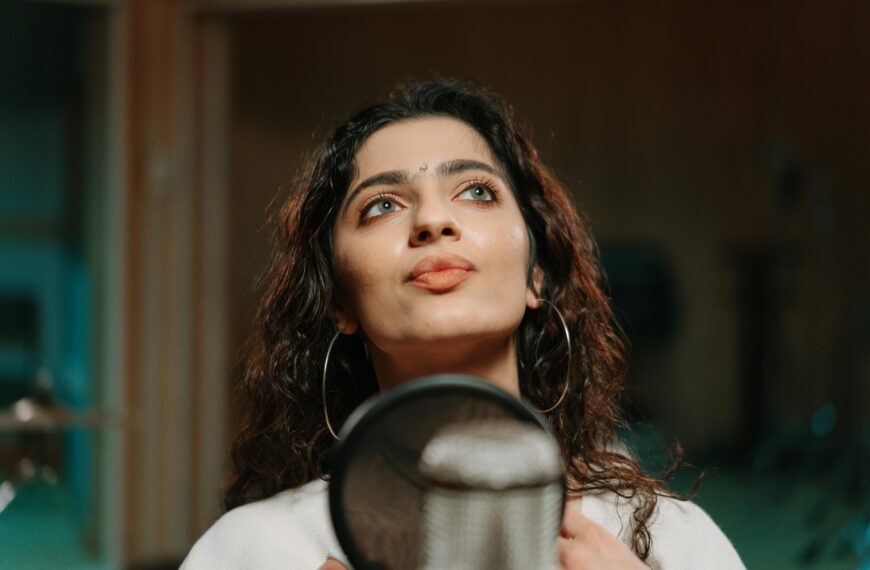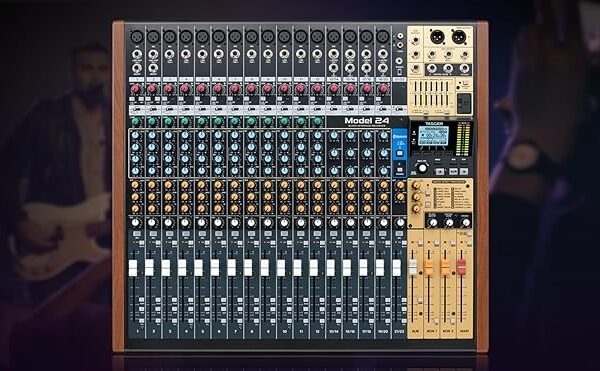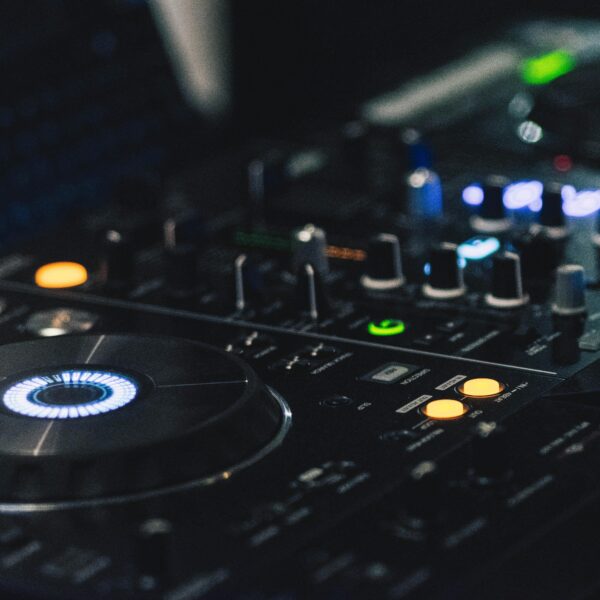Want to grow your brand while people actually listen? Start a business podcast—but not just any podcast.
With over 5 million shows fighting for attention (Spotify, 2024), launching one without a plan is like shouting into the void.
I made that mistake early on—hit record, uploaded, and hoped for the best. Nothing happened.
But once I followed a system, everything changed. Leads came in. Listens spiked. My brand suddenly had a voice.
In this guide, I’ll walk you through the 9 powerful strategies that helped me (and others) turn a simple podcast into a lead-generating machine.
Let’s unlock what actually works in 2025—no fluff, just clear steps you can follow.

Understanding Multi-Microphone Recording
- Why Use Multiple Microphones?
- Firstly, you won’t look like a cheapskate.
- Enhanced sound quality: Each microphone captures distinct audio sources, helps you have clearer and more balanced sound.
- Spatial separation: Different microphones can isolate individual speakers or instruments, minimizing crosstalk and improving clarity.
- Flexibility in post-production: Having separate audio tracks for each microphone enables precise editing and mixing during post-production.
There are 3 effective methods of doing this –
1. USB Audio Interfaces
interface needed, perfect for beginners or anyone who just wants to hit record and go. I started with a Blue Yeti—worked fine for my first 15 podcast episodes. 🎙️
But here’s the catch.
When you’re not alone—say, you’ve got multiple hosts—USB mics turn into a real headache. Most computers can’t handle more than one USB mic at once. According to Shure, the issue lies in how your computer’s sound card manages multiple audio streams—“Windows and macOS typically can’t natively aggregate multiple USB microphones” (Shure.com).
So what happens?
You plug in two mics, and suddenly both are picking up everyone’s voice. That’s audio bleed—your mic catches the other guy talking, and vice versa. The result? A messy, overlapping track that sounds like you recorded inside a cave. I’ve had to scrap full episodes over this 😓.
Also, latency becomes an issue. Since each USB mic is its own digital interface, they fall out of sync—one track lags behind the other. I once spent 4 hours trying to manually align waveforms. Never again.
There’s no easy workaround. Even pros like podcast editor Mike Russell say, “You’re better off with an XLR setup if you’ve got more than one speaker. USB just isn’t built for multi-mic setups.”
Still want to try?
Some people use virtual audio mixers like Voicemeeter Banana or Audio Hijack, but they’re buggy and crash often. Not ideal if you care about reliability.
The XLR Solution: To overcome this hurdle, consider investing in XLR microphones paired with a USB audio interface. Though this setup entails a higher initial cost, it offers greater control over sound quality and eliminates the headache of dealing with multiple USB microphones.
Example Scenario: Imagine you’re hosting a podcast with a co-host. By using XLR microphones connected to a quality audio interface like the Focusrite Scarlett, each host’s voice is captured independently, ensuring clean, professional-grade audio. Who doesn’t like it?
2. Portability of Digital Recorders
For podcasters on the move or those seeking a streamlined setup, digital recorders offer mobility and convenience. With no reliance on a computer, you can record high-quality audio wherever inspiration strikes.
The RodeCaster Duo: A good looking option for digital recorders is the RodeCaster Duo from Rode. This versatile audio mixer contains multiple mic inputs, has customizable settings, and is able to record directly to an SD card or computer via USB.
Example Scenario: Picture yourself conducting interviews for your podcast in various locations. With the RodeCaster Duo, you can effortlessly capture crystal-clear audio, thanks to its intuitive interface and robust recording capabilities.
3. Remote Recording Platforms
Recording podcasts with multiple hosts or guests in different locations? Remote podcast recording platforms are your best friend.
No, Zoom won’t cut it.
If you want broadcast-quality audio, you need tools built for this—not video meetings.
The Real Deal: What Matters Most?
Here’s the thing—reliability and sync should be non-negotiable.
If your guest’s audio lags, cuts out, or desyncs from the conversation, it destroys flow. I’ve lost entire episodes this way—it’s brutal.
Cleanfeed and Zencastr are two solid picks here. Cleanfeed runs entirely in-browser and offers uncompressed audio. Zencastr gives you local recordings from each participant. That’s key. You get crisp tracks even if someone’s Wi-Fi drops.
I once recorded a roundtable episode with three guests from New York, Berlin, and Dhaka—all on Cleanfeed. Zero drops. Not even a pop. That session made me switch permanently.
What Do the Experts Use?
Marc Maron uses a mix of in-person and remote setups and once said, “Bad audio kills the mood faster than bad content.” He’s not wrong.
Podcasting authority Buzzsprout reports that episodes with clear audio have 27% higher retention rates than ones with muffled or choppy sound [Buzzsprout, 2024].
And a study by Pacific Content showed that 65% of listeners will drop a podcast mid-episode if the audio isn’t clean [Pacific Content, 2023].
Skip the Tech Mess
Don’t get fancy if you don’t need to. USB audio interfaces like the Focusrite Scarlett 2i2 or Zoom PodTrak P4 are perfect for home setups.
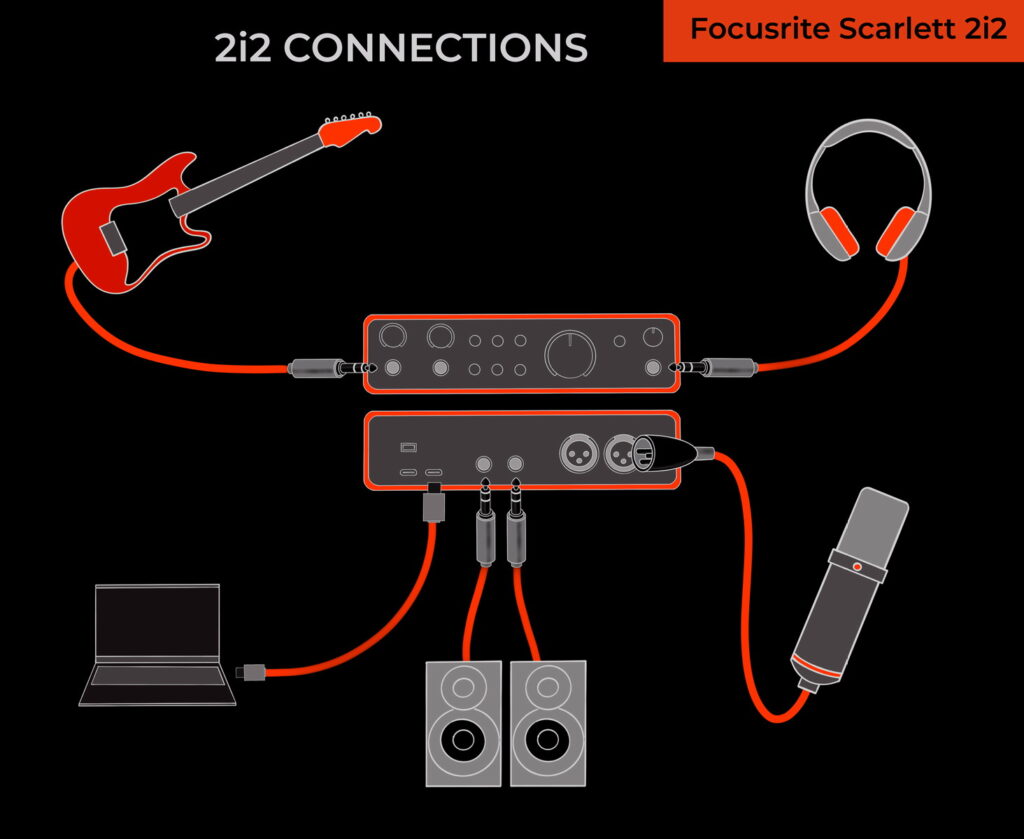
But if everyone’s remote? Stick to remote recording platforms. Cleanfeed, Zencastr, and Riverside.fm are popular, but not all are equal. Riverside has great video support, but I’ve had issues with sync drift.
People won’t forgive bad sound—even if your content is 🔥.
So get the tech part right. Use the right mic. Pick the right platform. Test everything before you hit record.
I’ve learned the hard way that clean, uninterrupted audio builds trust fast. If you sound polished, you come across as credible, serious, and worth listening to.
That’s how you stand out in the sea of 4.2 million active podcasts today [Podcast Index, 2025].
And yeah—a $15 mic on a good platform beats a $300 mic on a laggy call. Every. Single. Time.
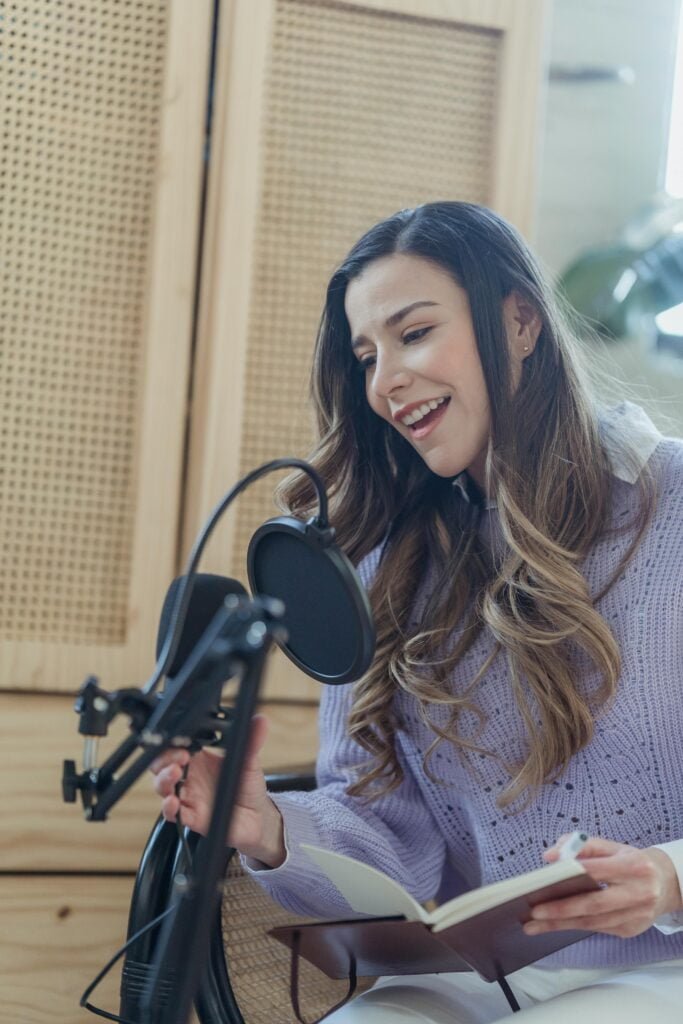
Choosing the Right Setup
- Consider microphone types: Dynamic, condenser, and ribbon microphones each have unique characteristics suited for different recording scenarios.
- Match microphones to sources: Select microphones that complement the specific sound sources you’ll be recording, such as vocals, instruments, or ambient noise.
ONE-PERSON SETUP
- Samson Q2U | $70
- Pop Filter | $6-30
- Any headphones you already have
Podcast Setup for Two
- Samson Q2U | $70 (x2)
- Audio Technica M20x | $50 (x2)
- Focusrite Scarlett 2i2 | $160
- Pop Filter | $6-30
pOdcast setup for three
- Samson Q2U | $70 (x3 or 4)
- Audio Technica M20x | $50 (x3 or 4)
- RODECaster Pro | $600
- Pop Filter | $6-30
- The Zoom P4, priced at $200, serves as a budget-friendly alternative to the RODECaster Pro.

Setting Up Your Setup
- Positioning: I Experiment with microphone placement to achieve optimal sound capture while minimizing background noise and reflections.
- Test for consistency: Ensure that all microphones are set to similar levels and positioned at consistent distances from their respective sources to maintain balance.

Recording with Multi-Microphones:
Direct Recording
Connect the mixer’s main output or individual channel outputs to a recording device such as a computer interface or digital recorder.
Software Integration
Utilize recording software or digital audio workstations (DAWs) to capture the mixed audio signals directly from the mixer via USB or audio interface connections.
Understanding Digital Audio Workstations (DAWs)
Digital audio workstations, or DAWs, are software applications used for recording, editing, and mixing audio. They provide a virtual workspace where you can manipulate audio tracks, apply effects, and fine-tune your recordings with precision.
Choosing the Right DAW
When selecting a DAW for multi-voice recording and mixing, consider factors such as ease of use, compatibility with your hardware, and available features. Here are some top DAWs known for their ability to capture mixed audio signals directly from mixers via USB or audio interface connections:
BandLab
BandLab is a cloud-based DAW that offers both web-based and mobile recording solutions. I personally use Bandlab most of the times. I like its AI voice improvisations and cool presets. It provides a user-friendly interface and a wide range of virtual instruments and loops for creating music and podcasts. BandLab supports multi-channel recording via USB or audio interface connections which allows you to capture multiple voices with ease. Its collaborative features enable real-time collaboration with other users and makes it a great choice for remote recording sessions.
Logic Pro
Logic Pro is an industry-standard DAW developed by Apple. It features a user-friendly interface and a wide range of built-in instruments and effects. Logic Pro supports multi-channel recording via USB or audio interface connections, making it suitable for capturing multiple voices simultaneously. With its powerful mixing tools and flexible workflow, Logic Pro is favorite among musicians, producers, and podcasters alike.
Ableton Live
Ableton Live is known for its innovative approach to music production and performance. It offers a unique session view for non-linear recording and improvisation, making it great for capturing spontaneous vocal performances. Ableton Live supports multi-channel recording and mixing, allowing you to combine audio signals from different sources seamlessly. Its real-time effects and creative tools add depth and texture to your recordings.
Adobe Audition
Adobe Audition is a versatile DAW that caters to both audio professionals and beginners. It offers a comprehensive set of recording, editing, and mixing tools, along with seamless integration with other Adobe Creative Cloud applications. Adobe Audition supports multi-channel recording via USB or audio interface connections, making it suitable for capturing multiple voices in high quality. Its intuitive interface and powerful features make it a popular choice for podcasters and content creators.
Recording with Multiple Voices:
Once you’ve chosen your DAW and set up your recording environment, it’s time to capture your audio. Here are some tips for recording with multiple voices:
- Use High-Quality Microphones: Invest in good quality microphones for each voice to ensure clear and crisp recordings.
- Set Levels Properly: Adjust the input levels for each microphone to prevent clipping and distortion.
- Monitor Audio Signals: Use headphones to monitor audio signals in real-time and make adjustments as needed.
- Position Microphones Strategically: Place microphones to minimize background noise and capture each voice evenly.
Audio Mixing Techniques
After recording, the real magic starts in mixing. 🎧 You want your voices to sound clean, balanced, and professional—not like a chaotic mess of frequencies competing for attention.
Start with EQ. It’s your best friend when it comes to shaping the tone of each voice. I usually cut out low-end rumble below 80Hz for dialogue—it’s mostly noise anyway. For clarity, a gentle boost around 2–5kHz can help voices pop, but don’t overdo it. According to Sound On Sound, 80% of muddy audio problems can be fixed with proper EQ. source
Compression is a must. It keeps things consistent by controlling dynamics—soft parts get louder, loud parts get tamed. I use a 4:1 ratio on vocals with a soft knee and medium attack/release. You don’t want it to sound squashed—just controlled. Grammy-winning engineer Andrew Scheps says, “Compression should be invisible. If you hear it, it’s too much.”
Reverb and delay? Add with care. Too much reverb makes vocals sound like they’re in a cave. I add a short plate reverb with around 10% wet mix just to give it depth. If the recording is dry and sterile (which is usually the case with budget mics), a bit of ambiance adds life. Delay can also replace reverb if you want clarity without muddiness.
Panning is how you create space. I usually keep the main voice dead center but pan background voices slightly left or right—maybe 10–15%. This simple trick helps each voice breathe. If everything’s centered, it’ll sound flat and crowded.
Volume automation is where your mix comes alive. I ride the fader to emphasize certain words, especially in storytelling or interviews. When I worked on a mini-doc podcast, I had to push the emotional quotes up just a touch—1–2 dB can change how a moment feels. You’ll hear the difference.
Now, let’s talk DAWs (Digital Audio Workstations). You can mix audio in Pro Tools, Logic Pro, Reaper, Audacity—even GarageBand. Personally, I love Reaper for its speed and flexibility. It’s also lightweight and insanely customizable. A study by Audio Issues found Reaper users complete mixes 28% faster on average than users of heavier DAWs like Pro Tools. source
Not all DAWs are created equal. Some, like FL Studio, are better for music production than voice mixing. Others like Audacity, while free, lack real-time processing power. So, try a few—your workflow matters more than brand loyalty.
When I first started, I made the mistake of throwing plugins on everything without understanding the basics. Learn to listen critically. Solo each track. Identify problems. Then fix them with intent, not presets. I’d rather use two plugins well than ten badly.
At the end of the day, audio mixing is both science and feel. Use EQ, compression, reverb, panning, and automation as tools, not crutches. Trust your ears. And remember—clean audio starts at the source. Fix it in the mic, not the mix 😉est for your unique needs and creative vision.
Advanced Techniques and Tips
- Subgrouping: Assign multiple channels to subgroup buses on the mixer for collective processing and control, such as applying effects or adjusting levels for a group of microphones simultaneously.
- Effects Processing: Incorporate outboard effects processors or built-in effects on the mixer to add reverb, delay, compression, or other enhancements to individual microphone signals.
- Experimenting: I like Using high-pass filters and playing with EQ adjustments to maintain clarity and precision. You should play too except in live recording environments or this might just be enough to destroy your image live on the internet.

Conclusion
Mastering multi-microphone recording requires careful planning, setup, and utilization of audio mixer techniques.
By understanding the principles outlined in this guide and experimenting with different microphone placements and mixer settings, you can elevate the quality of your audio production and create compelling content that engages and captivates your audience.
If you’re podcasting, recording music, or capturing live events, the combination of multiple microphones and audio mixers opens up a world of creative possibilities and ensures professional-grade results. Happy recording!
Planning on starting a podcast? Podcasting is a different game, and without a precise blueprint, the game will get tougher in the midway. Grow your podcast from scratch with Zero Audience and learn about how successful podcasters cracked the code by winning our Free Guide with step by step Guidelines.
Get your complete podcast equipment setup by visiting Podcast Equipment Bundle. Get in touch with podcasting services and experts those will save you tons of time at Podcast Production Services.
With that being said, Let’s connect with all such free and paid tool/services you might need knowingly or unknowingly to fuel your growth. Here’s 21 BEST AI TOOLS AND PLATFORMS TO GROW YOUR PODCAST AND CONTENTS. There are some bonus tools in the end too to make your day to day life easier.
There are some affiliate links on this page that will redirect you directly to the original products and services. Also by buying through those links you will be supporting us. So thank you ^.^
Related Posts
- Best USB Microphone Models Under $150
- Best Microphone Under $100
- Best Dynamic Microphone for podcasting
- Best USB Mic for beginners – Blue Yeti USB Microphone vs Fifine XLR USB Dynamic Microphone
- Dynamic vs Condenser Mic
- Best Under $100 Condenser Mic
- Best of the Most Expensive Microphones to Buy
- Best Wireless Mics
- Different Types of Microphones and Their Features
